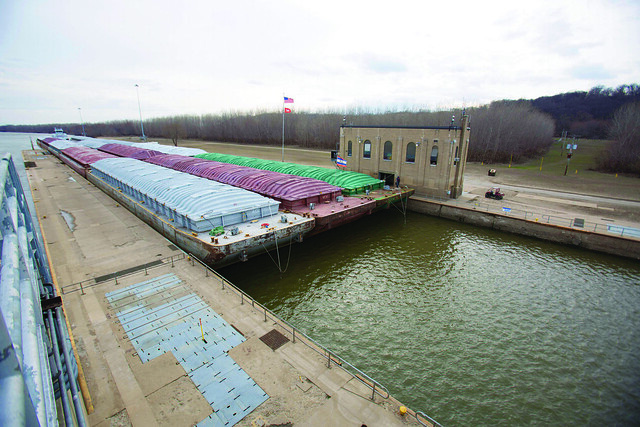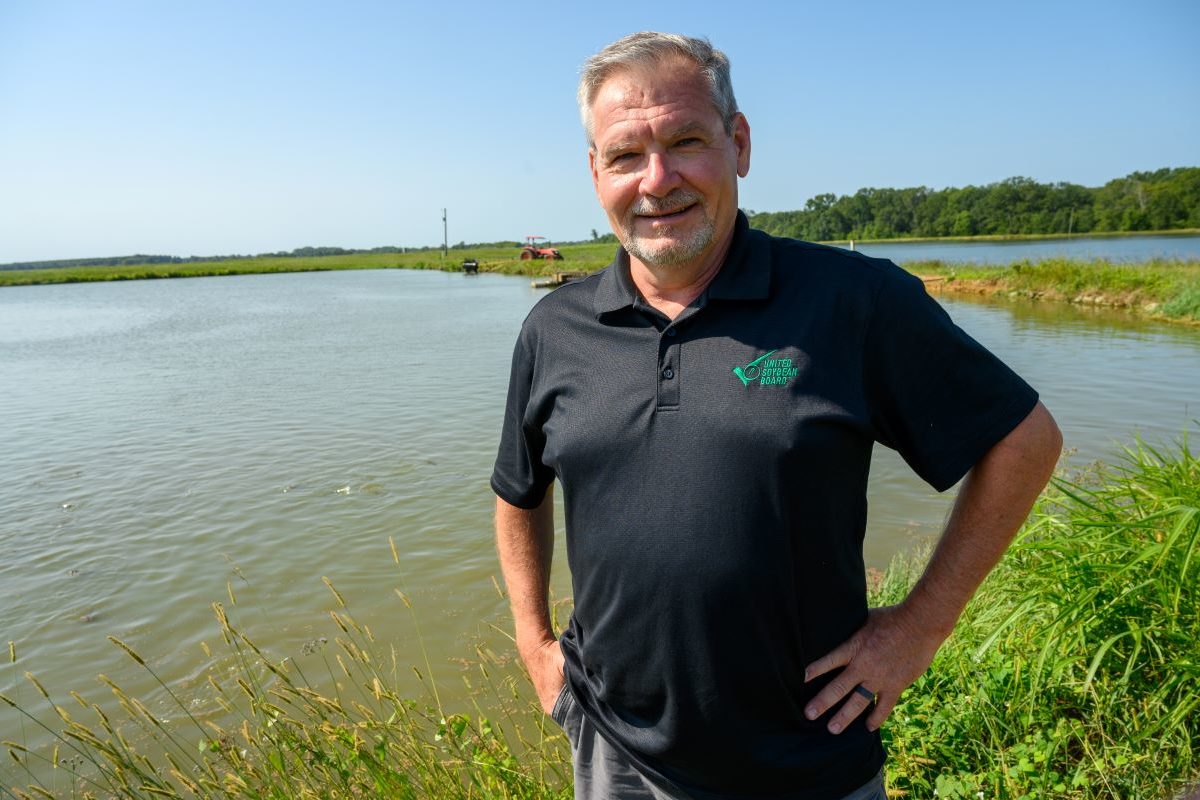Consistent Funding Would Extend Inland Waterways Budget

Construction and remodeling projects notoriously run over budget. Whether building a machine shed or modernizing a farmhouse kitchen, careful planning is required to stay on, or close to, budget. Rarely do projects start without knowing when and where the money will come from.
The importance of budgeting and fund availability magnifies with a project’s scale and scope. For example, take the locks and dams that keep the U.S. inland waterways navigable, efficiently moving hundreds of millions of bushels of soybeans and other commodities to customers around the country and the world.
Complex System Slows and Adds Cost
Currently, funding for lock and dam infrastructure construction or updates requires two separate actions from Congress. First, authorization grants permission for work. Then, through the Administration’s budgeting and Congressional appropriations process, the U.S. Army Corps of Engineers is directed to complete an activity.
“Authorization for a project can occur years before funds are appropriated,” explains Mike Steenhoek, executive director of the Soy Transportation Coalition. “And appropriations may only allocate funds for a portion of a project.”
Much like a remodeling project, costs can increase when a project is delayed or done piecemeal. The 2018 Predictable Funding for Locks and Dams report from the Soy Transportation Coalition, funded in part by the soy checkoff, quantified potential costs to taxpayers and industries such as agriculture that rely on inland waterways.
“Our research explored the differences between a lock and dam construction project done with an unpredictable funding approach and the same project done with consistent, reliable funding,” Steenhoek says.
“We confirmed how money is allocated is just as important as the amount.”
Predictability Enables Efficiency
The research compared funding approaches for a project with a five-year construction timeline and a $500 million initial cost estimate. The study estimates, due to costs of stopping and restarting work and inflation in materials costs under the current system, it would cost $573 million and require eight years to complete.
In contrast, predictable funding allocated to cover the entire cost would keep the project on time and on budget. It would also accelerate the timeline for agriculture and other industries to capitalize on the value of infrastructure improvements.
“The U.S. Army Corps of Engineers does an excellent job tackling the challenges of operations and maintenance needs for our lock and dam projects,” says Paul Rohde, Midwest-area vice president for the Waterways Council. “That’s essential in keeping America’s inland waterways functioning. However, their planning is severely compromised if they don’t know their funding levels in advance.”
And as with any construction or remodeling project, planning is key to preventing unexpected costs or delays.
As an example, Rohde points to the Olmsted Locks and Dam, located on the Ohio River about 20 miles north of where it joins the Mississippi River. A project to build modern locks was authorized in 1988 at a cost of $775 million and a seven-year timeline.
Due to many factors, including unpredictable funding and rising materials costs, the project was operational in August 2018 — 30 years after its authorization. The final cost was about $3 billion.
“Thankfully, a policy change in 2014 allowed for reliable funding to finish the Olmsted project,” Rohde says. “Restructuring the cost-share saved time and money. Had the status quo continued, the timeline would have extended longer, and costs would have increased even more.”
Working for Improvement
He acknowledges that federal budgets are difficult to manage, but he believes reliable funding is a big key to minimizing the risk of a lock and dam failure within the inland waterways system.
“It’s encouraging that appropriations for inland waterways have been trending up in recent years, allowing for completions of Olmsted, a start for three new projects, as well as a rehabilitation start at LaGrange Lock,” Rohde explains. “Hopefully this trend allows a start to construct modern 1,200-foot locks on the Mississippi and Illinois Rivers. Knowing the fund availability and the timeline for access to those funds will allow for planning that ultimately creates construction jobs while saving time and money.”
To support this trend — and ensure the ability to competitively bring soybeans to market — farmers have been exploring how taxpayer dollars can be stretched to maintain and improve U.S. locks and dams. The soy checkoff, Soy Transportation Coalition and American Soybean Association collaborate to find solutions from each of their unique missions. Their collective goal is to maintain the competitive advantage the inland waterways system provides for U.S. soybean farmers.
“The current system to fund lock and dam maintenance, repairs and improvements tends toward cost overruns and construction delays in many cases,” Steenhoek says. “The same project with the same price tag can have entirely different outcomes, not because of more money, but simply due to consistent, reliable funding.”



